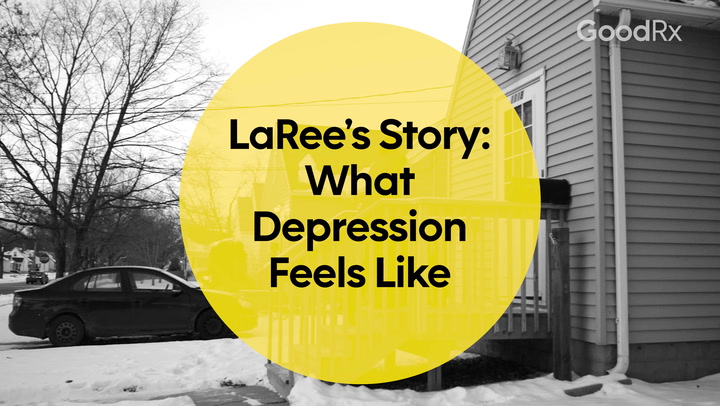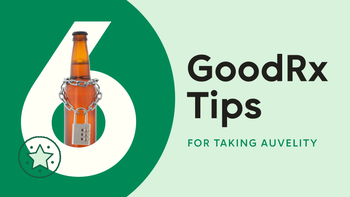
9 Warning Signs Someone May Be Considering Suicide
Key takeaways:
Knowing the warning signs of suicide can help you identify when someone may be struggling.
Warning signs can include talking about suicide, feeling hopelessness and/or helplessness, feeling like a burden, seeing pain as unbearable, and making plans to take one’s own life.
You can support someone who is feeling suicidal by asking them about it directly, listening and responding empathically, and talking about ways to get help.

According to the World Health Organization, suicide is one of the leading causes of death among 15- to 29-year-olds. Suicide is devastating. But it is also preventable.
Before you can help someone who is suicidal, you must know that suicide is on their mind. It can be challenging for people who are feeling suicidal to communicate their thoughts and feelings about it. This may be due to shame, a fear of being misunderstood or judged, limited support, or another reason. But it makes recognizing the warning signs of suicide even more critical.
There are many signs that could indicate someone may be thinking about taking their own life. And the warning signs may vary from person to person. However, there are some general signs that might give you cause you to wonder if someone is thinking about suicide.
Warning signs of suicidal ideation
Thoughts about suicide are referred to as suicidal ideation. This includes but is not limited to thoughts about wanting to take one's own life.
Suicidal ideation can lead to suicide if it goes unnoticed. Listed below are nine warning signs that someone may be considering suicide, according to the Suicide Prevention Resource Center.
1. Talking about wanting to die
Sometimes, when someone is thinking about suicide, they might make a comment, in a joking or serious way, about killing themselves. Examples of this include statements like, "I bet things would be better if I wasn't here anymore" and "I can't do this anymore. I want my life to be over."
2. Feeling helplessness and/or hopefulness
People who are struggling with suicidal thoughts may have a difficult time imagining their situation changing or improving. And they may have trouble coming up with reasons to stay alive. This can lead to feeling stuck or feeling like they have no control over their lives.
3. Exploring ways to die by suicide
This might include looking up methods of suicide or taking steps to get a means to hurt themselves, such as buying a gun.
4. Saying they feel like a burden
Someone who is considering suicide may express thoughts about being a burden. They may say they feel like a burden to others or feel as if they don’t belong anywhere. They may also express guilt or shame. These thoughts can lead to increased feelings of loneliness.
5. Withdrawing from friends and family
Individuals thinking about suicide may isolate themselves from others, including their loved ones. They may also start giving away their belongings or saying their goodbyes.
6. Talking about experiencing unbearable pain
People who are suicidal may say they don’t often feel like they can cope with what they’re going through. They may express that the pain they’re feeling is unbearable or insurmountable. Or they may say they feel trapped or see no way out of a difficult situation.
7. Mood swings
Extreme mood changes can lead to suicidal thoughts. In the case of certain mental health conditions, mood-related symptoms can have a direct tie to suicide risk. For example, people with bipolar disorder who experience the highs of a manic episode or a mixed depressive and manic episode may be at a higher risk of suicide.
Other emotional and behavioral changes that may indicate someone is at risk for suicide include:
Increased anxiety
Agitation
Experiencing rage or intense anger
Changes in sleeping patterns
Eating more or less than usual
8. Increased use of substances
Substances like drugs and alcohol can lower a person’s inhibitions. So using substances while feeling suicidal can be a potentially deadly combination.
9. Engaging in risky behaviors
Acting recklessly or engaging in risky behaviors may also be a sign someone is thinking about suicide. For example, a person might engage in dangerous driving or using drugs from an unreliable source.
Sometimes, these behaviors may be an indication of passive suicidal thoughts. When someone has passive suicidal thoughts, they may want to die but don’t have a direct plan. Instead, they put themselves in dangerous situations.
Risk factors associated with suicidal behavior
Risk factors for suicide are circumstances that increase the likelihood that a person may engage in suicidal behavior. Some of these risk factors include:
Previous suicide attempt(s)
Family history of suicide
Easy access to means of harming oneself
Mental health conditions like bipolar disorder, depression, and post-traumatic stress disorder (PTSD)
Being a survivor of violence
Being bullied
Serious or chronic illness
Aggressiveness or impulsivity
Feelings of hopelessness and helplessness
Legal issues
Financial troubles
Trauma, including adverse childhood experiences, intergenerational trauma, and historical trauma
Attitudes and stigma toward help-seeking and mental health
While there are forces that contribute to suicide risk, there are also factors that can reduce suicide risk. These are known as protective factors and include:
Having a support system
Using effective coping strategies
Having a sense of connection and community
Being able to identify reasons for living
When do you need to seek emergency help for suicidal ideation?
You should seek emergency help for suicidal thoughts if you feel that you are unable to keep yourself safe or have a plan to take your own life. If this is the case, reach out for help by calling 988, a mobile crisis unit, or asking a trusted person to help you get to an emergency room immediately.
If you already see a mental health professional, you can reach out to your provider. If they are not available, follow the safety plan you’ve created together for moments of crisis. This should include seeking immediate help if you have a plan to kill yourself.
What to do if you think a loved one is suicidal
Most people don’t know what to look for or how to ask someone about whether they’re feeling suicidal. Here are some strategies you can try if you are worried about a loved one:
Ask directly. It’s a myth that asking about suicide causes people to think about it. By asking, you’re breaking the ice and letting them know it’s OK to talk about suicide.
Listen empathically. It’s not easy to open up about suicide. Create a safe space by listening without judgment and understanding why your loved one might feel this way.
Offer support. Validate how the person is feeling. Then, take it a step further by asking about how you can offer help.
Share resources. Let them know that calling or texting 988 will connect them to someone who can help. You can also connect them with other suicide prevention resources.
Evaluate the risk. Not all people who are suicidal have a plan to act on those thoughts. Knowing whether your loved one has a plan or believes they can keep themselves safe can help you determine the next best steps together. If you’re not sure, call a suicide prevention hotline like 988 for additional support and guidance.
Get immediate help if necessary. Call 911 if you believe they are in immediate danger of harming themselves. Getting your loved one connected with help as soon as possible can be life-saving.
What not to do if a loved one shows signs of suicidal ideation
Showing empathy, being supportive, and determining risk are effective ways to help someone demonstrating signs of suicidal thoughts. It is not helpful to:
Change the subject: This shuts down the conversation, which can cause them to feel unheard.
Respond with judgment: This can lead to feelings of shame.
Leave them alone: Stay with them, offer support, or assist them in getting help.
Minimize what they are going through: This can invalidate their feelings.
Ignore the issue: Knowing that someone is suicidal is an opportunity to help.
Suicide-related resources and support
Help is available. Contact SAMHSA’s National Helpline at 1-800-662-HELP (4357) to find mental health resources in your area. The helpline is open 24/7 and can assist with referrals for treatment. You can also visit the online treatment services locator to search for local providers.
Additional resources for suicidal ideation include:
Crisis Text Line: The Crisis Text Line allows you to text with a crisis counselor 24/7. You can contact the hotline by texting “home” to 741741.
Trans Lifeline: This is a peer support hotline for trans people. To contact the Trans Lifeline, call 1-877-565-8860.
Trevor Project: The Trevor Project provides a confidential crisis line for LGBTQ youth. You can contact the crisis line by calling 1-866-488-7386. You can also text “start” to 678-678 or chat with someone online 24/7.
Teen Line: Teen Line is a peer support line for teens experiencing suicidal ideation and other mental health issues. To reach them, call 1-800-852-8336. Teen Line is open from 6PM to 10PM (PST), 7 days a week. You can also text “teen” to 839863 during the same hours.
Veterans Crisis Line: This is a crisis hotline for veterans and their loved ones. You can reach the Veterans Crisis Line by calling 988 and pressing 1. You can also text 838255 or use their online chat.
The bottom line
Understanding the warning signs of suicide can help you prevent it. Common warning signs include expressing hopelessness, feeling trapped or like a burden, and experiencing intense emotional changes.
Taking warning signs seriously is critical. If you believe someone is suicidal, ask them about it directly. Respond with empathy and offer support. Determine the risk as best you can and take steps to make sure they’re safe as quickly as possible.
References
Burke, T. A., et al. (2015). Cognitive risk and protective factors for suicidal ideation: A two year longitudinal study in adolescence. Journal of Abnormal Child Psychology.
Centers for Disease Control and Prevention. (2022). Risk and protective factors.
National Institute of Mental Health. (n.d.). Warning signs of suicide.
Suicide Prevention Resource Center. (n.d.). Warning signs for suicide.
World Health Organization. (2021). Suicide.
For additional resources or to connect with mental health services in your area, call SAMHSA’s National Helpline at 1-800-662-4357. For immediate assistance, call the National Suicide Prevention Lifeline at 988, or text HOME to 741-741 to reach the Crisis Text Line.

























